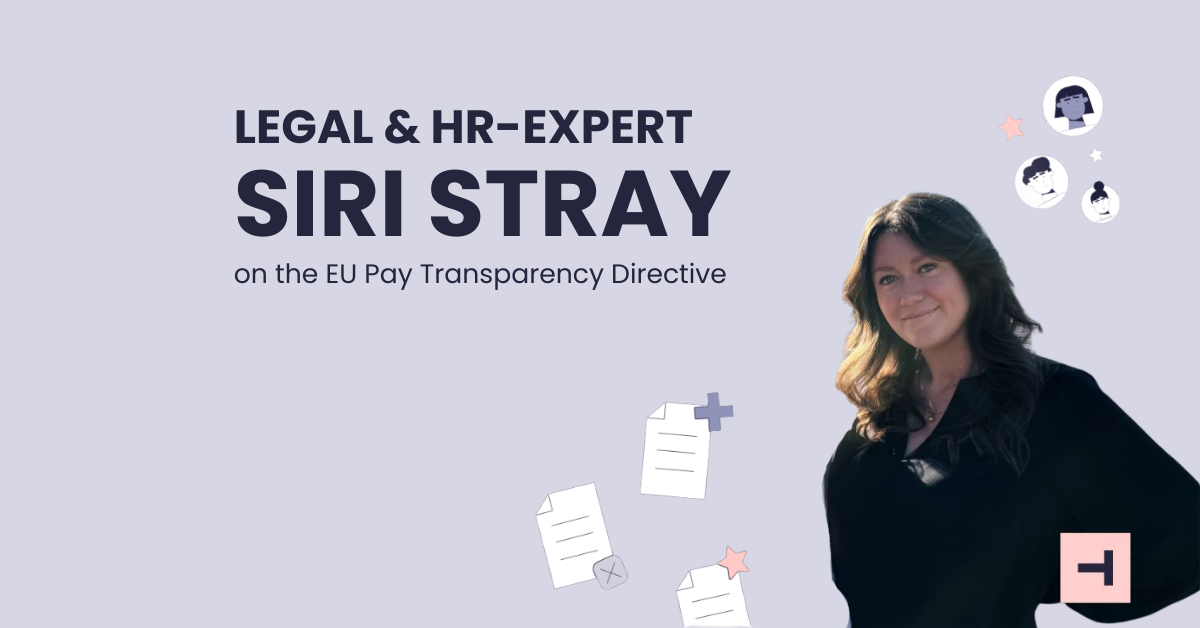More and more companies are having a hard time finding the right skills. Even before the pandemic, what we saw was a candidate-driven mark. The changes that have happend in recent years have pushed it further. Today, it is more important than ever for companies to be open to changing and updating their processes in order to succeed in acquiring and retaining employees in a highly competitive market.
| 5500 more job ads |
23% |
297,000 fewer in the talent pool |
Statistics from Talentech's system during August 2021 show an increase of 5,500 job advertisements compared to August 2020 - while the number of applications fell from 850,000 to 553,000.
We see that the number of job ads has increased, but the number of applications has decreased. This shows that the labor market has an increased number of positions to be filled despite a smaller pool of talents to recruit from.
So what are today's candidates really looking for? According to recent figures from LinkedIn, it is these three factors that candidates are mainly looking for:
- Work life balance (63%)
- Compensation and benefits (60%)
- Colleagues and culture that inspires to give their best (40%)
Candidates therefore place high demands on their workplace. In addition to a good salary, flexibility and good development opportunities are also emphasized.
“Candidates place new demands on the workplace. What they prioritize most is a good salary, the next thing is flexibility but also development opportunities and to be appreciated and feel supported by their leader and management. These are trends that companies need to consider and adapt to if they want to succeed."
Claudia Holgersson, Partner Manager - Public Sector, LinkedIn
Now we'll take a closer look at three areas that can help you win the battle for talent in a highly competitive market. In the following, we review 3 areas that can help your business solve today's challenges in attracting and retaining qualified employees.
1. Improve the employee experience
To meet the competence challenge, it is important to work in a structured manner in all phases of the employee journey - from attracting, recruiting and onboarding, to developing, retaining and offboarding. A strong employer brand is always built from the inside out. Get help from your employees. Developing an EVP, Employee Value Proposition, can be of great help. An EVP is, in short, the employee's experience of working for your company.
To build your EVP, you can e.g. ask these questions to your employees:
- What is the best thing about working here, and what sets us apart from other workplaces?
- What characterizes the culture here?
- In which areas do we need to develop and improve as a workplace in order for you to want to stay and develop and be an ambassador for the workplace?
- What characterizes our management?
These areas are key to becoming an attractive employer for today's candidates. If you use puls checks, you can also build a lot of your EVP using these results, which is also always updated in real time.
“We are experiencing a digitalization on steroids, which requires a great deal of effort on the part of employers. Among other things, you must be open for new ways of organizing, new forms of employment and strong distance management. ”
Claudia Holgersson, Partner Manager - Public Sector, LinkedIn
Here are some of the benefits of creating a strong EVP:
- Studies show that companies that effectively live up to their EVP can increase their new hire engagement by almost 30%
- Keep your skilled employees longer. Studies show that companies that work dedicated with its EVP, can reduce annual staff turnover by almost 70%.
2. Become data-driven with recruitment analysis
One tool that is central to succeeding in taking control of the supply of competencies is recruitment analysis.
With good tools for recruitment analysis, you get in-depth insight into your recruitment efforts. Among other things, you get answers to questions such as “Which channels give the best ROI depending on target group?”, “How long are our recruitment processes?", "What is our time-to-hire?" and "where in the recruitment process do we lose candidates?"
It is thus about acting on data and facts rather than gut feelings. Once you have full insight into the entire recruitment process, it becomes easier to understand where in the process you need to deploy.
By using a tool for recruitment analysis, you can experience several positive effects:
- Save 30-40% on your advertising budget by targeting your ad spend where your target audience is.
- Identify bottlenecks in the recruitment process
- Create a better candidate experience on an ongoing basis
In addition, you can use data to show how your employer branding contributes to better recruitment and business. And then you have full control over candidate flow, recruitment sources, demographics, recruitment efficiency and more.
3. Increase the flow and quality of candidates through referrals
When recruiting, it is an advantage to work with a wide range of channels - one of these channels is your own employees. Employee referrals have been shown to provide a positive ROI.
Many companies have tried it manually, but to really do it effectively, it is an advantage to use a tool developed specifically for this.
With employee referrals, you have the opportunity to:
- Strengthen your employer brand through the strongest ambassadors - your employees
- Reach out to attractive and passive candidates through your most trustworthy senders
- Recruit employees who are 25% more productive and stay 30% longer.
Want to know more about how we can help you win the battle for talent?
Book a demo with one of our experts and we will answer all your questions and show you how best practice software for referrals and recruitment works!


.png)

